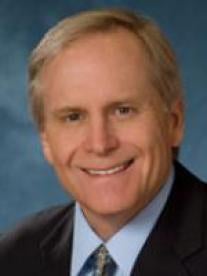In my previous post I discussed at length the fundamental flaw in the analysis applied by the CAFC in the CLS Bank decision, and by the Supreme Court in Bilski. I pointed out in that post that it is a legal fiction, indeed undesirable legal trickery, to ignore an explicitly claimed physical component of an invention in order to sidestep the clear statutory nature of a programmed computer, or in other words a special purpose machine. In CLS Bank, the Federal Circuit found claims to electronic methods and computer programs for financial-trading systems on which trades between two parties who are to exchange payment to be ineligible for patenting under Section 101.
I also pointed out in that post that, nonetheless, not all machines would necessarily qualify for patenting even if the machine was recognized as part of the claimed invention.
One simple way to wrap our head around this seeming paradox is to consider how a court or policy makers would address an invention claimed as follows:
1. Record player apparatus, comprising:
a record player with a spinning platter and a stylus supported on an armature; and
a musical waveform engraved in a disc, the musical waveform having a sequence of notes comprising [unique sequence].
On the one hand, this claim describes a purely physical apparatus, and therefore is a machine that ostensibly qualifies as Section 101 subject matter, but on the other hand the uniqueness of the machine owes itself to what is traditionally regarded an artistic work, not an useful art. So, what existing patent law doctrine excludes this subject matter from protection? Arguably the musical composition would be excluded under the printed matter doctrine, even though it is claimed engraved in a substrate in combination with a machine. See, for example, In re Russell, 48 F.2d 668, 669 (CCPA 1931) (“The mere arrangement of printed matter on a sheet or sheets of paper, in book form or otherwise, does not constitute ‘any new and useful art, machine, manufacture, or composition of matter,’ or ‘any new and useful improvements thereof,’ as provided in section 4886 of the Revised Statutes.”) (en.wikipedia.org/wiki/Printed_matter_(patent_law))
So, how does this help us understand the CLS Bank decision? Viewed simplistically, CLS Bank essentially treats financial services subject matter to be the equivalent of music or printed matter that does not fall within the useful arts, and ignores the computer in the same way the phonograph player would be ignored in my hypothetical.
While the Federal Circuit’s logic in CLS Bank to ignore the computer components set forth in the claims is superficially analogous to ignoring the phonograph player in my hypothetical, it is not directly analogous. Why? In the case of the hypothetical, the phonograph player operates exactly the same for any record it plays. Its functional operation is fixed and unvarying. While it will produce different sounds depending on the record played, those sounds are produced in exactly the same way from one record to another. On the other hand, CLS Bank is claiming a computer configuration that is electronically functioning in a unique way, indeed differently than any other computers programmed according to the prior art. The computer itself is transformed by the program into a unique, special purpose machine. Further, the purpose and function of a computer program such as that in issue is technical – its purpose is to reconfigure a computer to perform a unique function. For example, a computer program can transform a general purpose computer into a unique music player, that would conventionally be regarded as patent eligible subject matter.
As such, in my view, the biggest problem with CLS Bank is not that it finds the patented invention outside of the scope of Section 101, but rather the manner in which it arrives at this conclusion. In the CLS Bank case, the computer program in question unquestionably has a “functional relationship” to the computers on which it runs, indeed dictating functional operation of the computer system — therefore the long recognized exception to the printed matter doctrine, i.e., that the printed matter has a “functional relationship with the substrate,” should apply.



 i
i

